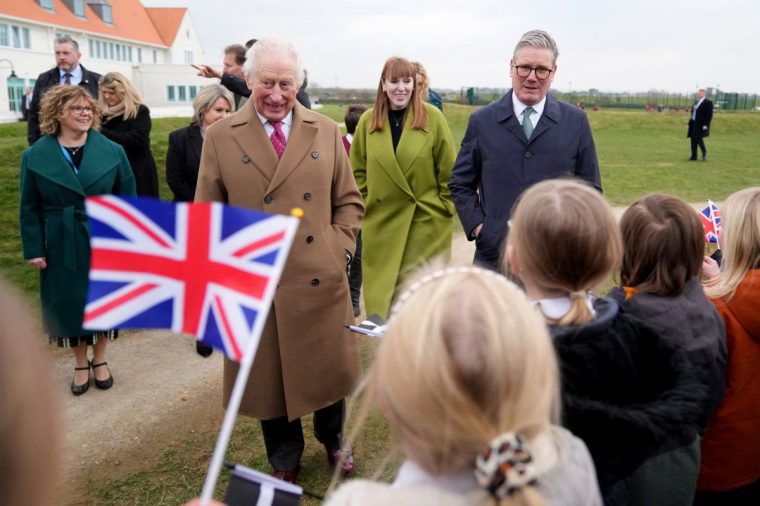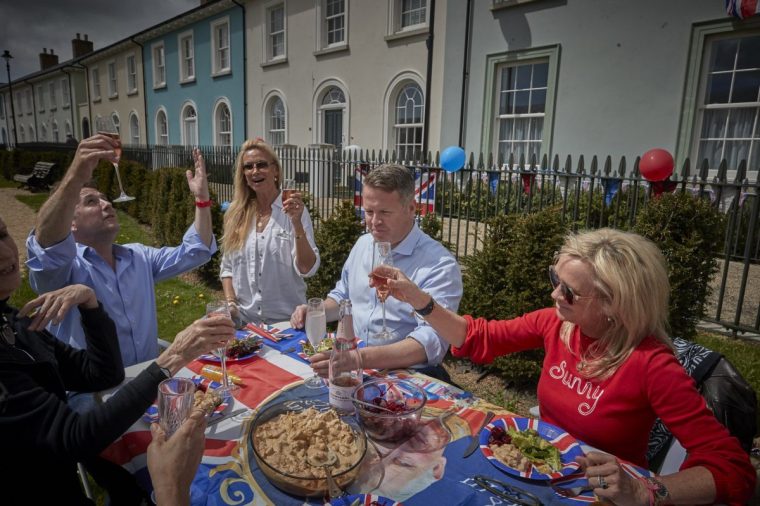Sir Keir Starmer is set to unveil the next generation of new towns in the coming days based on the designs of the King’s traditional housing developments in Dorset and Cornwall.
The Prime Minister is expected to announce the first dozen new towns that will be built across the country at the Labour Party Conference, which kicks off in Liverpool this weekend.
It comes as the Government gave a clear indication that the King’s views on architecture and planning will be incorporated into the new towns.
New FeatureIn ShortQuick Stories. Same trusted journalism.
In a speech to the King’s Foundation at Hatfield House in Hertfordshire this week, a senior civil servant at the Ministry of Housing, Communities and Local Government (MHCLG) paid tribute to the monarch’s model town at Poundbury in Dorset.
Biljana Savic, head of placemaking at the ministry who used to work for King Charles’s built environment charities, outlined many of the principles which the Government and monarch share in wanting to design new towns.
These included making them walkable rather than built for cars, containing a mix of housing including affordable and rented homes, using terrace housing and mansion blocks but not tower blocks, and built after consultation with local people.
“We always look to Poundbury as a really good example,” she told an audience of more than 150 architects, town planners, and developers.
King ‘has been consistent’
Ben Bolgar, executive director of the King’s Foundation, suggested the monarch might not speak out like he used to when he was Prince of Wales, but still exercised influence and had seen his once ridiculed ideas become mainstream.
“He’s been incredibly consistent. So I don’t think he’s trying to influence unduly. He’s just got strongly held beliefs which I think the world, certainly this country, are coming to agree with,” he said.
Bolgar conceded that some developers complained they could not afford to spend as much as Charles on building homes because they had to buy the land, turn a profit, and create social infrastructure to support communities.
But he insisted that many of the King’s ideas could be incorporated into new housing if the cost of infrastructure was spread over decades.
 King Charles, Keir Starmer and then-deputy prime minister Angela Rayner visited the King’s Nansledan in Newquay, in February (Photo: Alastair Grant/AFP)
King Charles, Keir Starmer and then-deputy prime minister Angela Rayner visited the King’s Nansledan in Newquay, in February (Photo: Alastair Grant/AFP)
In February, the Prime Minister said after a visit to the King’s Nansledan housing development in Cornwall that he wanted to build “beautiful communities” with an aim for “at least 40 per cent of homes to be affordable, including social housing”.
He added: “I was struck by the quality of the build, the variety, [I was] particularly struck by the fact that you couldn’t tell which was social housing.”
King Charles’s “experimental” urban extensions have been criticised by some sections of the design industry for being pastiche, and building houses based on out-dated styles.
But the Prime Minister believes the developments are hugely popular with local communities and are a demonstration of how to overcome conventional Nimbyism.
12 locations have been selected
The locations of the around 12 new towns have been selected by the Government’s New Towns Taskforce, which is due to publish its final report that will set out the design principles of the new settlements, each delivering more than 10,000 homes.
The announcement will form part of Starmer’s attempt to show voters that his administration has moved from “fixing the foundations” of the country to “delivering” the policies that will lead to renewal over the next decade.
The exact locations of the new towns have been kept closely under wraps to prevent speculators driving up land values, but industry insiders believe the choice of where the new towns will be developed will be driven by political necessity, as much as by the demand for more housing.
It has prompted speculation that sites near Liverpool, Manchester and in the corridor between York and Leeds could be part of the final shortlist, despite the most acute housing need being in London and the south east.
The small town of Tempsford in Bedfordshire and an extension to Milton Keynes have also been heavily tipped.
 Residents toast King Charles III and Queen Camilla during a street party in the small town of Poundbury built by King Charles III (Photo: Kiran Ridley/Getty)Labour under pressure meet 1.5m housing target
Residents toast King Charles III and Queen Camilla during a street party in the small town of Poundbury built by King Charles III (Photo: Kiran Ridley/Getty)Labour under pressure meet 1.5m housing target
Insiders have also claimed that MHCLG is now under pressure to include some of the new towns as part of its 1.5m housing target, despite the two policies originally being kept separate.
Downing Street is eager to see a vast increase in the number of houses being delivered, and is willing to include those built as part of the new towns scheme as part of the overall target.
As such, it has led some in the sector to suggest that the vast majority of the new towns announced will be “urban extensions”, building developments of up to 20,000 houses next to existing conurbations that are already served with decent transport infrastructure.
Tom Wilson, head of WPI Strategy’s Built Environment Unit, which produced a major report on the most suitable locations for new towns, said the impact of the Building Safety Regulator on new housing starts, has meant there is “substantial political pressure on the New Towns Taskforce to see the successful new towns delivered faster”.
“This is likely to mean that projects with more existing infrastructure will be favoured, particularly within existing cities or as urban extensions to existing settlements,” he said. “This includes new towns in and around large cities like London and Liverpool and as expansions to towns benefiting from local support or new rail infrastructure.”
The inclusion of the King’s designs comes more than 40 years after the then Prince Charles upset the architectural establishment by describing a proposed glass and steel extension to the National Gallery as a “monstrous carbuncle on the face of a much-loved and elegant friend”.
He stopped it and that 1984 speech heralded a succession of controversial interventions aimed at preventing the construction of further new buildings he disliked.
